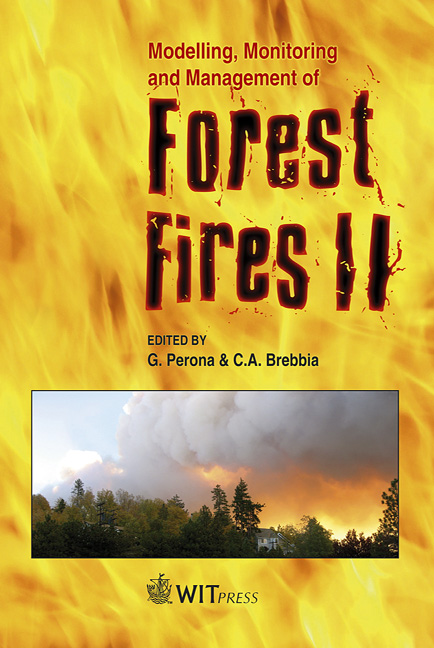Correlations Between Heat Release Rate And Gaseous By-product Concentrations Applied To The Characterization Of Forest Fuels
Price
Free (open access)
Transaction
Volume
137
Pages
10
Page Range
15 - 24
Published
2010
Size
1,237 kb
Paper DOI
10.2495/FIVA100021
Copyright
WIT Press
Author(s)
I. Fernández-Gómez, J. Madrigal, A. J. de Castro, M. Guijarro, J. M. Aranda, C. Diez, C. Hernando & F. López
Abstract
In this work an adapted bench-scale Mass Loss Calorimeter (MLC) device is used to measure HRR for forest fuels. The MLC has the same heating unit as a standard cone calorimeter, but a) the physical basis to measure HRR in a MLC (by using a calibrated thermopile) is different than the one used in the standard cone calorimeter (oxygen consumption method) and b) the MCL does not have a unit to measure the concentration of the gases produced during the combustion. Although the concentration values are not essential to measure the HRR curves, their knowledge is of great interest to characterize the combustion process and the combustion efficiency. In this sense, a Fourier transform based spectroradiometer (FTIR) has been adapted to the MLC in a short open-path configuration to measure \“in situ” the concentration of carbon monoxide and dioxide and water vapour, nearly simultaneous to the measurement of the HRR values. This simultaneity in both types of measurements allows one to find correlations between different variables. These correlations would help to make predictions on unknown variables in the framework of fire models. Keywords: calorimetry, heat release rate, forest fuels, short open path FTIR spectroscopy.
Keywords
calorimetry, heat release rate, forest fuels, short open path FTIR spectroscopy





